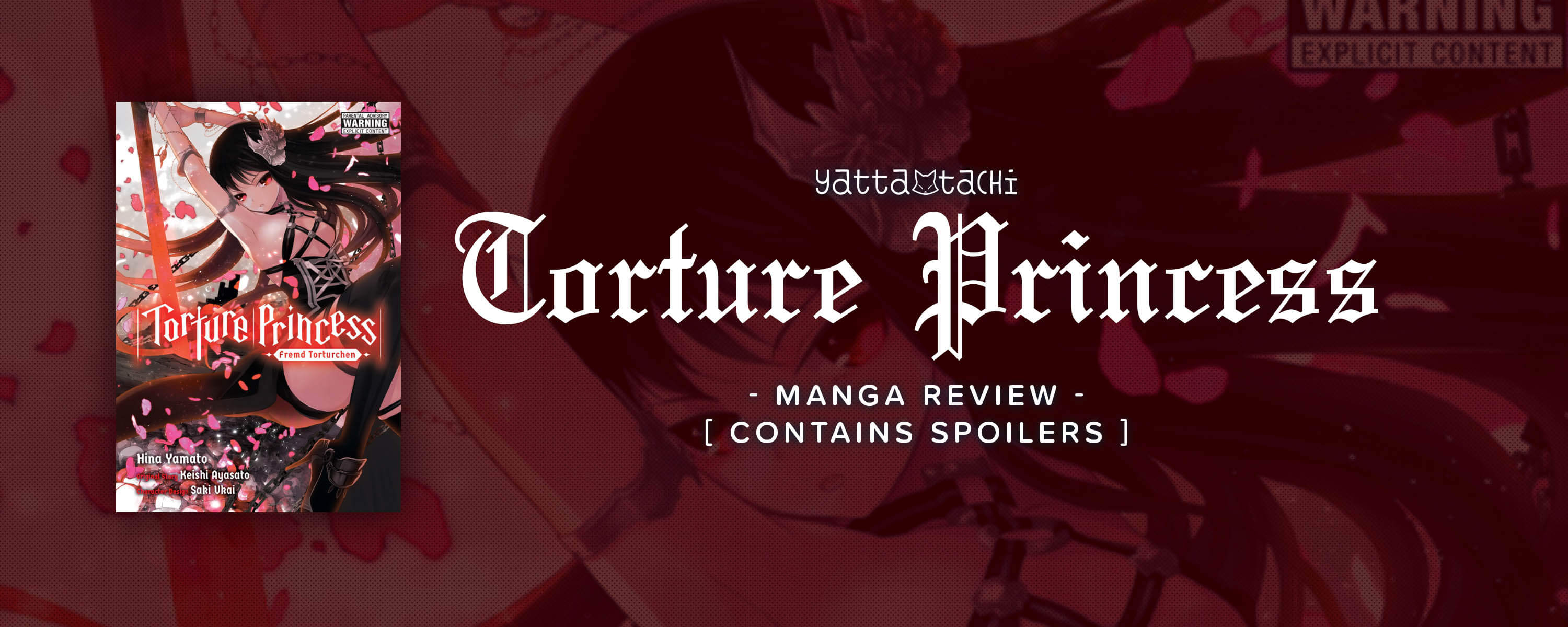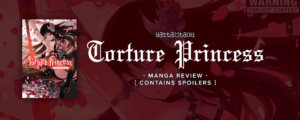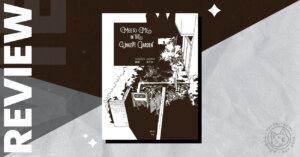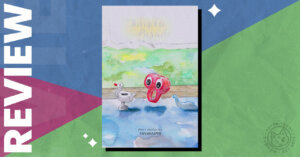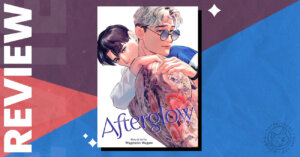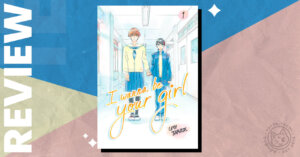Warning: This post contains spoilers.
Kaito Sena, a young man abused and eventually murdered by his father, is summoned to another world at the moment of his death. His summoner is Elisabeth le Fanu, the Torture Princess. She’s been tasked by the Church with eliminating fourteen powerful demons, and she gives Kaito the option of either dying again, forever this time, or becoming her servant until she completes her task, whereupon she’ll be put to death for her past crimes of torture. Kaito accepts, and together they confront their demons, literally and metaphorically.
Torture Princess is drawn by Hina Yamato, adapted from a light novel series of the same name by Keishi Ayasato with character designs by Saki Ukai. Both manga and novel are published by Yen Press.
The Presentation
The Torture Princess manga adaptation is only 3 volumes long, and Yen Press wisely bundled it into a single omnibus edition. The end result is a hefty tome with eye-catching cover art and quite a few color pages that at least at first glance seems like a good value (it’s not, but that has nothing to do with the overall release quality. More on that in a minute).
I didn’t notice a single typo nor any other quality control issues. The translation in general reads very smoothly, except for in some cases Elisabeth’s dialogue. She speaks in an archaic, Ye Olde Englishe kind of style. I assume she’s supposed to come off as haughty, condescending, and overly proper in the original Japanese, so kudos to translator Nathaniel Thrasher for accurately rendering this in English. However, if you’re not used to decoding this sort of Shakespearean speaking, it’ll probably take some of the enjoyment out of reading it.
The lettering, courtesy of Phil Christie, is mostly in the same style as other Yen Press books, with sound effects accompanied by unobtrusive subtitles. But there are some nice drippy fonts and spiky metal band logo-like fonts used for pained screams, and some of the effect subtitles are styled to match the text they’re translating. It’s an easy to read lettering job that occasionally goes above and beyond.
The Art
You might have guessed from the title, but Torture Princess is a very violent story, and violence and horror is what Yamato excels at drawing. Elisabeth’s attacks usually involve using magic to create giant machines to torture and kill her enemies, which leads to some surreal and spectacular murders. And when characters die, blood erupts out of them like fireworks, adding to the absurdity. It gets a bit ridiculous at times, but at least it’s interesting. There are also some moments that are genuinely disturbing, like a scene involving a baby in a box full of spiders. And there are a few striking creature designs too, like the giant slug made up of human arms, breasts, and face skin that appears early on.
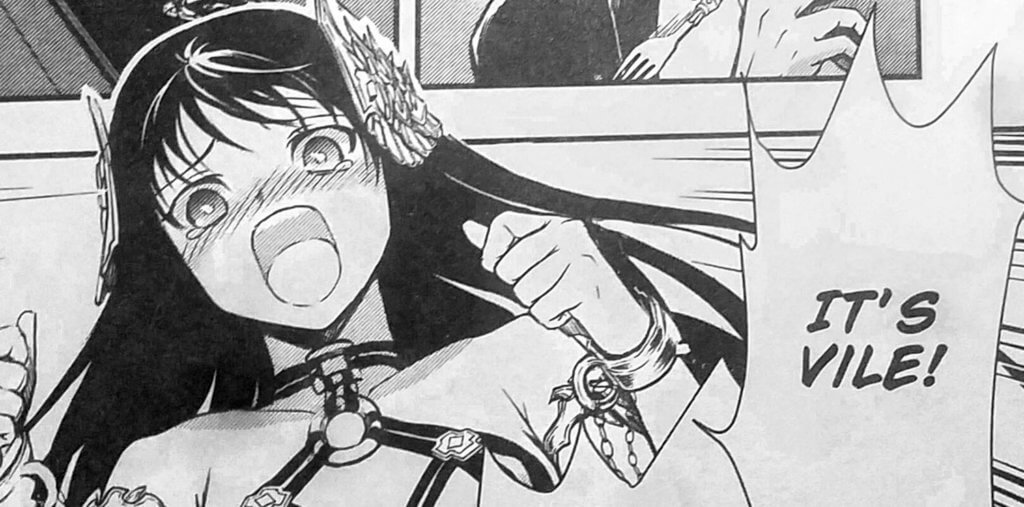
The less monstrous material isn’t quite as good though. The environments are pretty stock fantasy castle town or dungeon settings. Most of the character designs are dull. Kaito and Hina, an automaton who joins the group part way through, both look very generic, like they stepped out of a “How to Draw Manga” book. Elisabeth is the only humanoid character with a unique design, and that’s mostly due to her super interesting outfit, which is made up of thin leather straps and not much else.
Speaking of, the “Torture Princess” title and the cover art, which features Elisabeth wearing said outfit on a background of rose petals and chains, definitely gave me some preconceived notions about how much fan service the story would have and how fetish-y that service would be. So I was very surprised by how unsexy the visuals were most of the time. Aside from the previously mentioned boob slug, there’s only one chapter that has any nudity at all, and it’s brief and not particularly eroticized.
Even Elisabeth isn’t overly sexualized. She wears The Outfit basically all the time to the point that it stops registering as something the author thinks you should find sexy, and the camera angles rarely play up how much skin she’s showing. Normally I’d be impressed by the artist’s restraint, but I actually think this book would benefit from heavier-handed fan service.

I can think of very few stories in any medium that could be described as “BDSM-flavored action” (Bayonetta maybe?), and had Torture Princess played up that angle it could have really stood out. Unfortunately as it is, it’s mostly just action and distinctly lacking in flavor.
The Plot
That Bayonetta comparison is actually fairly apt, given how the plot is presented. Like many recent isekai stories, the world that Kaito gets transported into is reminiscent of a video game. But instead of that game being a JRPG or MMO, Torture Princess resembles a beat ‘em up along the lines of Bayonetta or Devil May Cry. We’re presented right away with the prospect of a very linear progression through 14 boss fights. Characters go on missions, gain temporary allies, and get info dumped onto them by local NPCs. Elisabeth yells out the names of her attacks, and they all look like a cross between the Spanish Inquisition and a Final Smash. The influence from these kinds of games is obvious.
Sadly, this influence makes the plot suffer. Most beat ‘em ups like DMC have thin plots that only exist to facilitate moving from one action set piece to the next, and Torture Princess is no different. None of the action scenes are connected to each other by the through line of a character’s development, for example, so it reads like an incoherent collage of violence.
There could have been some character development, or at least the exploration of some of the half-formed ideas in the margins of the story. We almost got some. Torture Princess pokes at ideas of cycles of abuse, forgiveness, and the value of violence and self-sacrifice. We learn that Elisabeth is an abuse victim, as well as an abuser herself. Elisabeth’s abusiveness is portrayed in a weird way as self-sacrificial. She’s forced into torturing people at first, and she eventually embraces it as a way of developing the power to exact revenge on her own abuser, who is an extremely powerful man and a threat to her whole country. The ends justify the means for her. She’ll perpetuate her cycle of abuse with a smile on her face if it means she can save her kingdom.
Kaito is an abuse victim who refuses to take revenge on his primary abuser, his father, when given the opportunity and perpetuate his cycle of abuse. But he doesn’t forgive his father either, and his father eventually suffers for his actions. The author presents us with these two general ideas about how to handle abuse – taking revenge or just escaping – but never tries to make any kind of statement on which they think is better.
They also don’t make any clear statement on the importance of forgiveness. Elisabeth treats Kaito like garbage right up to the final page, pretty much abusing him too. But despite refusing to forgive his father, Kaito forgives Elisabeth, out of a combination of pity and Stockholm Syndrome. Obviously what Kaito’s father did to him is worse that what Elisabeth did, but Elisabeth didn’t do anything to earn that forgiveness either.
It also bothered me that there were no consequences of any kind for any of the protagonists. Kaito also has his moment of self sacrifice when he jumps in front of a blade to save Hina. He gets cut nearly in half and looks like he’ll die for sure. We fade to black and he’s just fine, like nothing happened. Elisabeth never gets burned at the stake like she says she’s going to. It all amounts to a mess of sloppy storytelling whose final message is basically that all abusers must die, unless they’re one of the good guys, and that violence begets violence, except not for the good guys. This inconsistent take on justice undermines anything interesting it may have had to say about whether violence is ever necessary and the impact it has on the people who have to commit it.
The Verdict
Buying Torture Princess gets you a lot of manga for your money, but tragically it’s not very good manga. It’s worth noting that this manga only adapts the first volume of the light novel, but it’s presented as a complete story and for this review I have to evaluate it as such. As effective as the gory horror can be, the threadbare, rambling disaster of a plot line drags the book as a whole down way too much for me to recommend it.
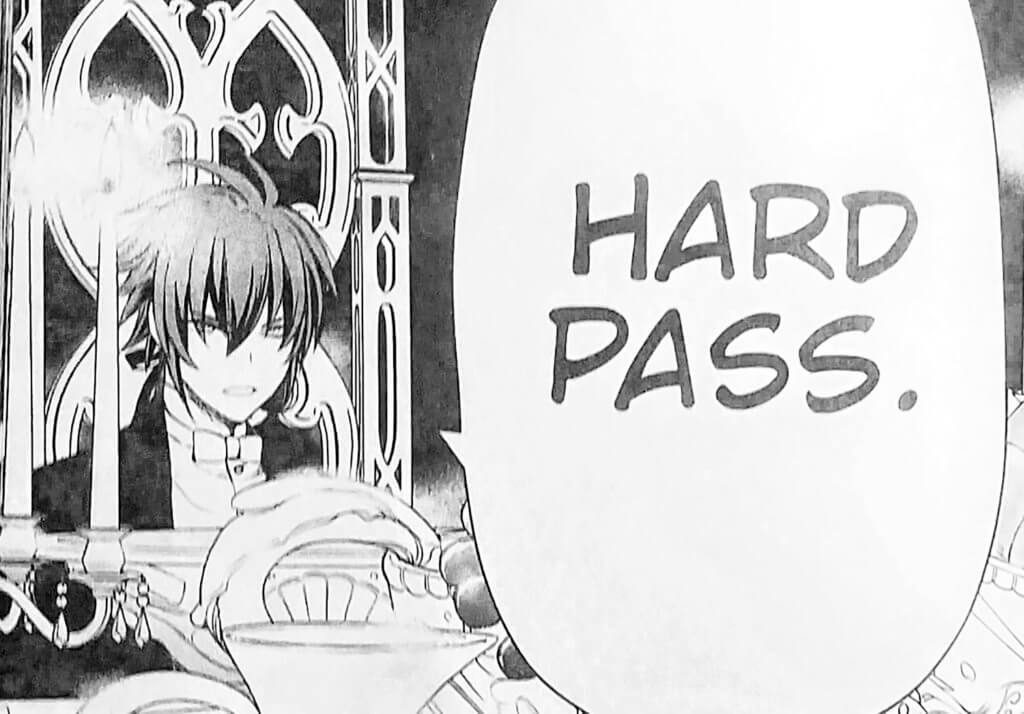
Thanks to publishers Yen Press for providing a review copy. For more information about Torture Princess, visit AnimePlanet. You can purchase a copy of Torture Princess through Barnes and Noble and RightStuf.
The Good
- Effective horror, cool creature designs.
The Bad
- Generic characters and a messy, brainless story.

Featured Sponsor - JAST
The sweetest romance and the darkest corruption, the biggest titles and the indie darlings; for visual novels and eroge, there's nowhere better.
Big thank you to our supporters
From their continous support, we are able to pay our team for their time and hard work on the site.
We have a Thank-You page dedicated to those who help us continue the work that we’ve been doing.
See our thank you page